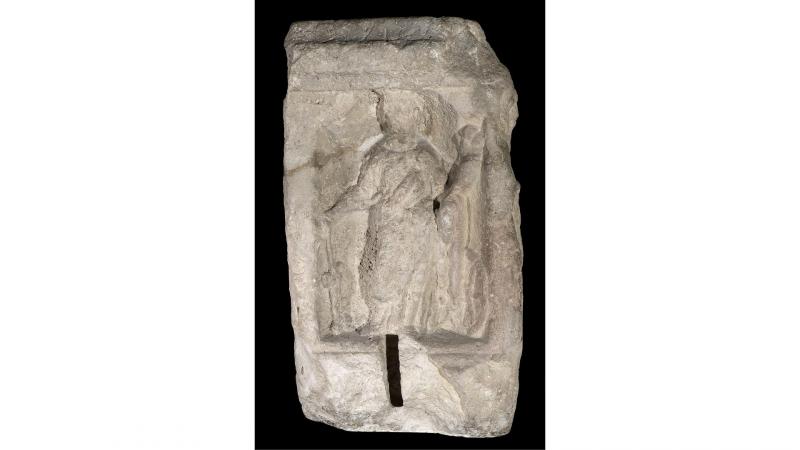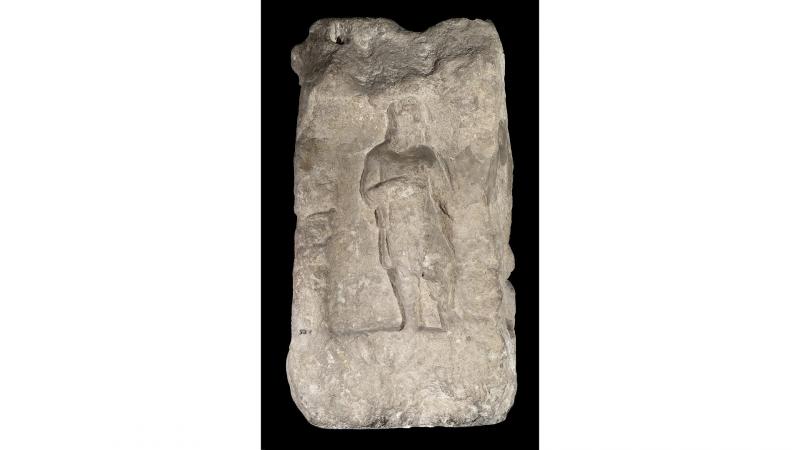The four faces of this quadrangular pedestal are adorned with a bas-relief deity, which is inscribed in a recess. Juno, the queen of heaven and the goddess of fertility and marriage, can be recognised by the inclined libation hook she holds in her right hand and the torch leaning against her left arm. Fortuna, the deity who provides over life's uncertainties, is depicted with three distinctive attributes: the cornucopia that she holds in her left hand, the rudder on which her right hand rests and a wheel at her feet.
The third face of the pedestal depicts a figure dressed in a short cloak, who does not have divine attributes. In all likelihood, this is Mercury, the messenger of the gods and the god of trade and travel, who frequently appears on this type of carved monument. The left hand, which is aligned along the body, probably held a caduceus; the right hand is folded across the chest and may have held a bag. The fourth sculpted figure, which has been drastically altered, is still under conjecture. It could be the god Hercules, who is traditionally depicted naked. The remains of the Nemean lion are seen on his left shoulder, while his right hand rests on a club. A frieze engraved with an illegibly inscribed dedicated crowns this historiated pedestal.
These "Four Gods stones", which associate two female deities with two masculine deities, constituted the pedestal of a type of official monument
that was common in eastern Gaul and the Rhineland, called a "Jupiter column" or "giant Anguiped column". The most complex monuments consisted of a four Gods stone which was surmounted by a circular or polygonal pedestal. The latter would be decorated with deities in relief. This intermediate pedestal supported a columnar barrel decorated with scales, which was surmounted by a Corinthian capital that was occasionally decorated with busts symbolising the Seasons. A ronde-bosse sculpture depicting a rider – Jupiter, to whom the emperor was sometimes assimilated – crushing an Anguiped giant (whose body ends in a serpent's tail) crowned the building. This carved group symbolised the victory of light over darkness and order over chaos.

